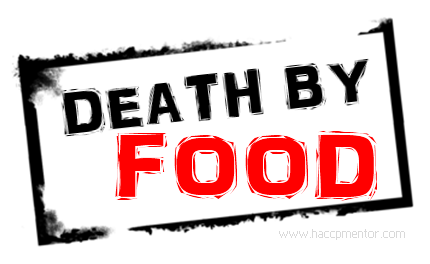In this episode we discuss what should be documented in a cleaning schedule, validation and verification of product claims and what food kills the most people.
This week
00:00 – What’s in this episode
00:23 – Cleaning Schedules
01:36 – Product and Nutritional Claims
02:43 – Food Recall Wrap-up
03:31 – Internal Audit Scope
04:32 – Food Poisoning Outbreak
05.16 – Action of the Week – Maintenance Tools
05:46 – Share this Video
Transcription
Welcome to HACCP Mentor Review – I am Amanda Evans and in this episode we discuss:
- What should be documented in your cleaning schedule
- Control of Maintenance Tools
- Product Claims
- Internal audit scope
along with all the news from the world of food recall, food poisoning and food safety fails.
Lets kick the review off with cleaning schedules.
Cleaning Schedules
Producing food in a clean premises and environment is the foundation of good manufacturing practices and best way to ensure that this happens, is to make sure you have a plan. That is where cleaning schedules come in. A cleaning schedule is a plan of how you are going to make sure that your food business is maintained in a clean and hygienic state. Having the cleaning schedule documented is even better as it sets in concrete the business expectations around cleanliness and provides food handlers with a clear direction on what needs to be done.
The key elements that should be included in all cleaning schedules are:
- What is going to be cleaned eg. item, equipment, surface, object
- The method of how something is to be cleaned. These can be written in standard operating procedures or work instructions and will include what chemicals and equipment to be used.
- The frequency or ‘how often’ the cleaning is to occur
- Who is responsible for completing the cleaning activity.
Product and Nutritional Claims
Everywhere I look in the supermarket, I am bombarded with food product advertising but more so, marketing related to product claims. Examples of product claims in the context of food production includes things like low fat, low carb, high fibre, organic, halal, gluten free, free-range…I won’t go on but hopefully you understand what I am talking about. Like anything – if your food business is making a product or nutritional claim, you need to be able to back that claim. You need to have solid evidence and documentation to support what you are claiming.
The first port of call would be to check with legislation relevant to your country that the claim can legally be made. The next step is to validate your claim with relevant testing. The final step is to ensure that the product continues to meet the product or nutritional claim. This step is known as verification and should be included in your food safety HACCP plan verification schedule.
Food Recall Wrap Up 
Something a little different this week in our food recall wrap-up with dog treats recalled in the USA for the presence of antibiotic residue.
Listeria contamination is all over the food recall list again this week with several different products implicated from different countries. Cheese tops the list along with sprouts, crab spread and the continuing salmon recall (as previously reported).
A few foreign matter food recalls also this week relating to metal fragments in two separate products – bagels and fried chicken breasts. There was also plastic found in chicken nuggets.
Internal Audit Scope
Whenever you conduct an internal audit within your business, be very clear about the scope of that particular internal audit. The scope defines the parameters of the internal audit and supports what you reviewed and what you didn’t review. All of the major GFSI standards require an internal audit to be completed on your systems and practices against their requirements.
So if we take the example of say SQF, the internal audit scope would need to cover the entire standard. Your checklists or audit guides would then need to reflect this (a bit like the audit checklist your external auditor would use). If you are not able to complete the audit all at once, I suggest you narrow your scope to a particular section of the standard for example pest control, cleaning, allergen management or HACCP.
As long as you cover the entire standard within the required time-frame / frequency all should be good.
Food poisoning Outbreak
Some interesting data out of the USA this week with the Centre for Disease Control and Prevention reporting on food poisoning. Food outbreak and illness data collated from 1998 to 2008 found that 46% of illnesses notified came from produce and more deaths, (277 of them) were attributed to the consumption on contaminated poultry. Of these poultry deaths, 63% were attributed to Listeria monocytogenes and 26% attributed to Salmonella spp.
To see the full report just check out the CDC website and I have also put a link in transcript to this video.
Action Item of the week
This weeks action item is about maintenance tools. It is such a no brainer but I don’t know how many times I have done an audit and found maintenance tools left on equipment. Make time this week to walk around your food production facility to see if there are any maintenance tools left on machinery. Don’t forget that this also includes nuts, bolts, screws – all the things that can be potential foreign matter in your product.
Share this video
That wraps it up for this edition. You can get a full transcription of this video on my website if you want to read this content so just head over to www.haccpmentor.com.
Thanks for watching, I am Amanda Evans from HACCPmentor.com.



